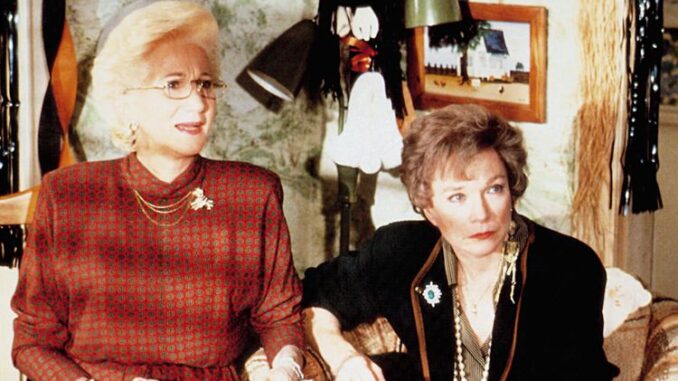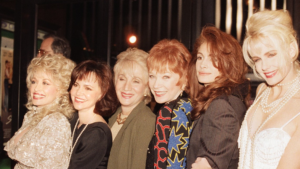
One of the most striking elements of Steel Magnolias is its seamless blend of humor and tragedy. Set in the small town of Chinquapin, Louisiana, the film explores the lives of six women whose friendships form the backbone of the story. What makes the film unique is its ability to balance heart-wrenching emotional moments with lighthearted, comedic relief. This delicate interplay between laughter and tears elevates the narrative, making it not only a poignant tale of love and loss but also a celebration of resilience and the human spirit.
Humor as a Coping Mechanism
From the very beginning, Steel Magnolias establishes humor as a way for its characters to navigate life’s challenges. Truvy’s beauty salon, the central meeting place for the women, is filled with witty exchanges and playful banter. Characters like Clairee Belcher (Olympia Dukakis) and Ouiser Boudreaux (Shirley MacLaine) deliver some of the film’s funniest lines, often using sarcasm and humor to deflect pain and keep spirits high.
For example, Ouiser’s famous line, “I’m not crazy, I’ve just been in a very bad mood for 40 years,” encapsulates her gruff exterior while also hinting at her underlying vulnerability. Similarly, Clairee’s quick wit lightens the mood during even the most serious conversations, reminding viewers that humor can serve as both a shield and a balm.
This consistent use of humor not only provides relief but also reflects a universal truth: in the face of adversity, laughter is often the first step toward healing.
Tragedy at the Heart of the Story
While humor permeates much of Steel Magnolias, the film doesn’t shy away from tragedy. The central conflict revolves around Shelby (Julia Roberts), a young woman whose battle with type 1 diabetes creates tension between her desire to live life fully and the physical risks she faces. Shelby’s decision to have a child, despite the dangers to her health, is both an act of courage and a source of heartbreak for her family, particularly her mother, M’Lynn (Sally Field).
Shelby’s eventual death is the emotional climax of the film, delivering a devastating blow to both the characters and the audience. Yet, even in the wake of this loss, the film doesn’t descend into despair. Instead, it uses this tragedy to underscore the strength of the women’s bond, as they come together to support M’Lynn and honor Shelby’s memory.

The Duality of Laughter and Tears
What sets Steel Magnolias apart is its ability to juxtapose moments of levity with profound sadness, often within the same scene. For instance, the funeral scene following Shelby’s death includes one of the most powerful displays of this duality. M’Lynn’s heartbreaking outburst, where she questions why her daughter had to die, is met with silence and tears. Yet, moments later, Clairee’s attempt to lighten the mood—by encouraging M’Lynn to hit Ouiser—brings unexpected laughter, breaking the tension without diminishing the gravity of the moment.
This balance is a testament to the film’s understanding of human emotion. It recognizes that laughter and tears often coexist, and that finding humor in difficult times is not a sign of weakness but of resilience.
The Role of Humor in Building Connection
Humor in Steel Magnolias also serves as a tool for building relationships. The women’s shared laughter creates a sense of intimacy and solidarity, reminding viewers that humor can strengthen bonds even in the face of adversity.
Truvy, with her cheerful demeanor and optimistic outlook, often sets the tone for these moments. Her philosophy, summed up in the line “Laughter through tears is my favorite emotion,” captures the essence of the film. It is through this balance of emotions that the women find the strength to endure life’s challenges together.
A Reflection of Real Life
The film’s blend of humor and tragedy resonates deeply because it mirrors real life. Everyone experiences moments where joy and sorrow overlap—where a joke can bring comfort during a time of grief, or where laughter emerges unexpectedly in the midst of tears. By portraying these moments authentically, Steel Magnolias invites viewers to reflect on their own lives and the ways they cope with hardship.
Why the Balance Matters
The ability to balance humor and tragedy is not just a narrative device; it is central to the film’s message. Steel Magnolias is, at its core, a story about resilience—the ability to move forward despite pain, and to find light even in the darkest times. The humor doesn’t detract from the seriousness of the characters’ struggles; rather, it amplifies their humanity, making them relatable and their stories unforgettable.
Conclusion
Steel Magnolias masterfully weaves together humor and tragedy to create a rich tapestry of emotion. By capturing the complexity of human experiences—where laughter and tears often go hand in hand—the film offers a deeply moving and authentic portrayal of life’s highs and lows.
Through its unforgettable characters and timeless storytelling, Steel Magnolias reminds us that strength is not just about enduring hardship but about finding joy and connection in the midst of it. It is this balance, this embrace of life’s contradictions, that makes the film a true masterpiece and a celebration of the resilience of the human spirit.
